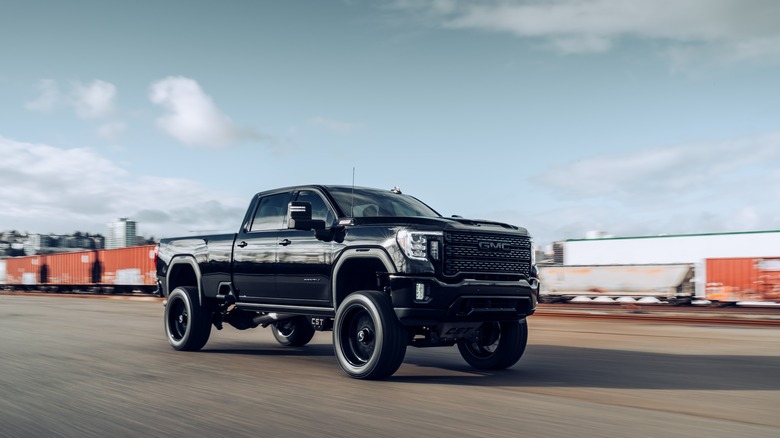
Brandon Woyshnis/Getty Images
The Duramax engine was introduced in 2001, and it quickly became known for its reliability and performance. The 6.6L Duramax diesel engine has made an appearance in the Chevrolet Silverado and the GMC Sierra over the years, and both of these models continue to be popular choices for new and used truck buyers.
To build this powerful workhorse, GM partnered with Japanese auto manufacturer Isuzu, and the result was the legendary Duramax V8, which has retained its basic architecture for more than 20 years now. Over the years, though, the Duramax has gone through various upgrades and iterations, with each version of the changes introduced to improve performance and durability or comply with the regulatory requirements of the time.
While some of these iterations continue to be highly sought after due to their steady performance, some variants have been less favored by automobile enthusiasts, given that they are plagued with mechanical issues. If you’re considering buying a vehicle that is designed with the Duramax engine, especially from the used car market, it’s important to know which engine years are better than others. To help you make an informed decision, we’ve explored the best years for the 6.6 Duramax engine, as well as two versions of the engine that you may want to avoid.
2006–2007 LBZ
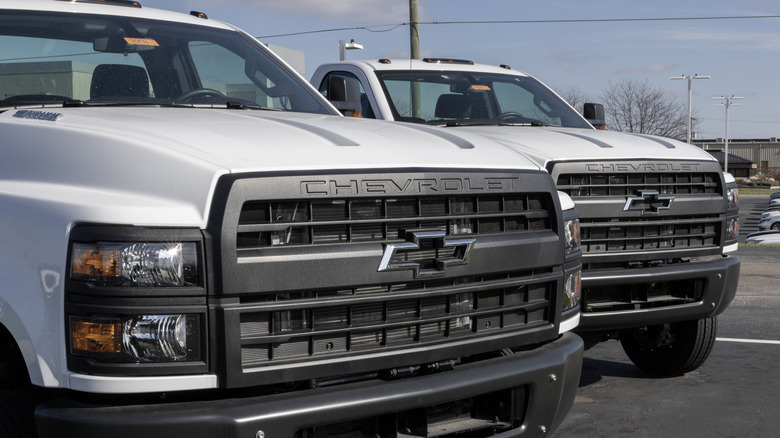
Jetcityimage/Getty Images
Introduced in 2006 to replace the LLY Duramax engine, the LBZ, which could produce up to 360 hp and 650 lb-ft of torque, quickly established itself as one of the most reliable diesel engines ever built. This is partly because many issues that were present in the LLY engine were resolved in time for the LBZ. The engine also saw numerous upgrades — components like the fuel injectors, fuel pump, and engine block were adjusted to improve the Duramax’s durability.
Having said that, it’s important to note that the extreme popularity of this engine among automobile enthusiasts was due to the absence of emissions control parts. This was, in fact, the last Duramax engine built without modern-day emission control technology, which became mandatory in subsequent models due to environmental regulations that kicked in the following year.
This, combined with the high-pressure common-rail fuel system, allowed the LBZ to deliver more power than previous Duramax engines without compromising the lifespan of the engine or even fuel economy. As a result, a number of much-awaited models at the time featured the 6.6-liter LBZ Duramax, including the Chevrolet Kodiak, GMC TopKick, GMC Sierra, and the Chevrolet Silverado, which has consistently been designed with reliable engines.
2001-2004 LB7
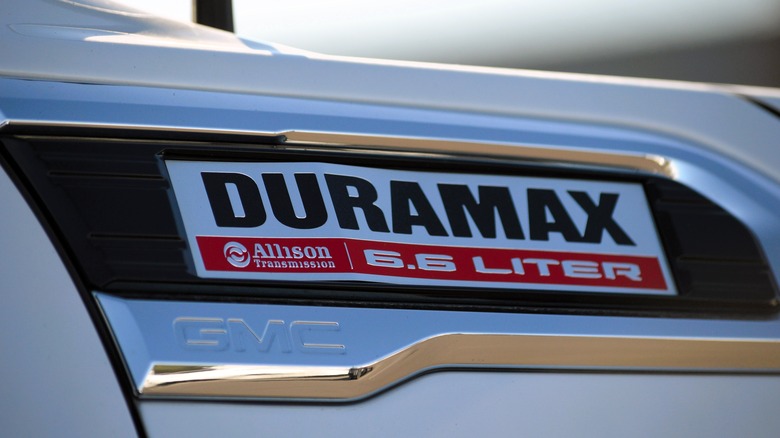
Around the World Photos/Shutterstock
The LB7 Duramax engine is a turbocharged, intercooled V8 that produces 300 hp and 560 lb-ft of torque. The engine made an appearance on several popular models at the time, including the Chevrolet Silverado 2500HD/3500HD, the GMC TopKick, and the Chevrolet Kodiak, among others.
The LB7’s production began as a joint effort by GM and Isuzu in 2000, and it was developed in record time — just 37 months, which is the quickest development time for any Duramax engine. With the LB7, General Motors attempted to create a diesel engine that would have similar dimensions and take up just as much space as a gasoline engine would. This resulted in the LB7 having a more compact size and a simplified engine design that incorporated all the necessary components in a smaller frame without compromising on performance.
Another noteworthy feature of the LB7 was the inclusion of the Allison 5-speed automatic transmission, which was considered the first automatic transmission that was capable of handling the power and torque of a diesel engine. Although buyers had a choice between the Allison and a ZF 6-speed manual, many went with the more popular Allison transmission system because it was a more durable option. Like the LBZ, the LB7, being an older engine, lacked emission control devices, which meant a lesser impact on power and lower chances of failure, given the absence of certain parts. This was another reason why this engine gained a reputation for reliability and became a popular choice among Duramax enthusiasts.
2017–2023 L5P
The Duramax L5P was launched in 2017 and made an appearance in models like the 2017 GMC Sierra HD and the 2017 Chevrolet Silverado HD. Producing 445 hp and 910 lb-ft of torque, this was one of GM’s most powerful and reliable diesel engines. To make this possible, this engine went through several performance upgrades. The crankshaft, aluminum pistons, main-bearing caps, rods, oil and water pump, and head gaskets were made stronger, larger, and more capable than previous versions. GM also added cast aluminum cylinder heads for more airflow, as well as a lift pump that helped improve the performance of the fuel system. These performance upgrades essentially mean that a crew cab could go from 0 to 60 mph in just about six seconds — an impressive feat.
A brand-new version of the L5P Duramax engine was introduced in 2024. This new engine features certain enhancements, including new pistons with a tapered bowl design, higher-flow injectors for more fuel injection pressure, glow plug upgrades, and more. The L5P also has an upgraded turbo that features 10 blades instead of the 11 that were used in previous models. The 10-blade design allows more efficient exhaust outflow. Since this is such a new offering, the jury is still out on the long-term reliability of this iteration of the L5P. Still, previous engine years have set a rather high bar for its performance and durability, and it’s expected that the all-new L5P will match up to those standards.
2011–2016 LML
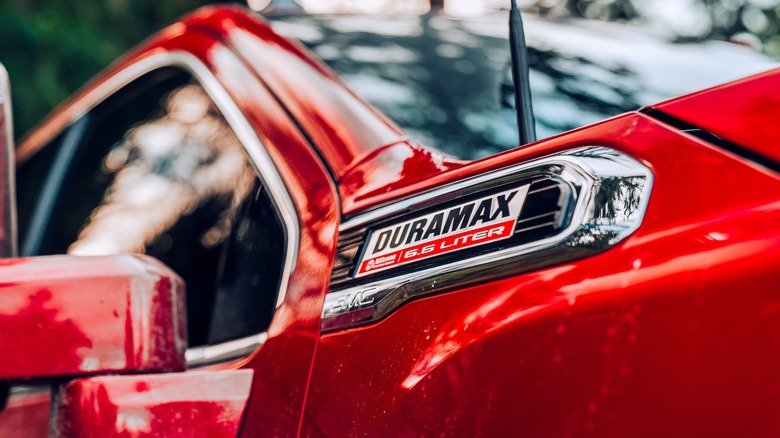
Brandon Woyshnis/Shutterstock
Now that we’ve discussed some of the best years for the Duramax engine, let’s take a look at a few that you may want to avoid. The first among these is the LML Duramax engine, which was introduced in 2011. The engine was available in the GMC Sierra and the Chevrolet Silverado and was known to be fairly emissions-efficient. In terms of design, the LML was almost completely redesigned, with 60% of its parts being new compared to the previous generation of the Duramax. Although these upgrades made the LML a decent performer, the new fueling system and emissions devices were letdowns.
One of the biggest issues with the LML was the CP4.2 injection pump, which was prone to failure. Compared to the previous CP3 injection pump, the new pump allowed 20% less fuel to flow and lubricate the inner components, which led to premature wear and made the engine incapable of handling excess power without a lift pump. Additionally, when the injection pump failed, it would start circulating dirty fuel, which would cause metal debris to wear off from the internal components and move around. This would ultimately result in the fuel system shutting down. The fix, in this case, typically involves replacing the fuel lines, but this isn’t exactly inexpensive. If you purchase a car with this engine, it’s best to swap out the injection pump for a more durable option before it has a chance to break down.
The engine also featured heaters to prevent the freezing of the DEF fluid. However, the DEF heaters are prone to failure, and the only fix is to replace the heater. Of course, if you live in an area with year-round warm weather, this is an issue you can ignore.
2007-2010 LMM
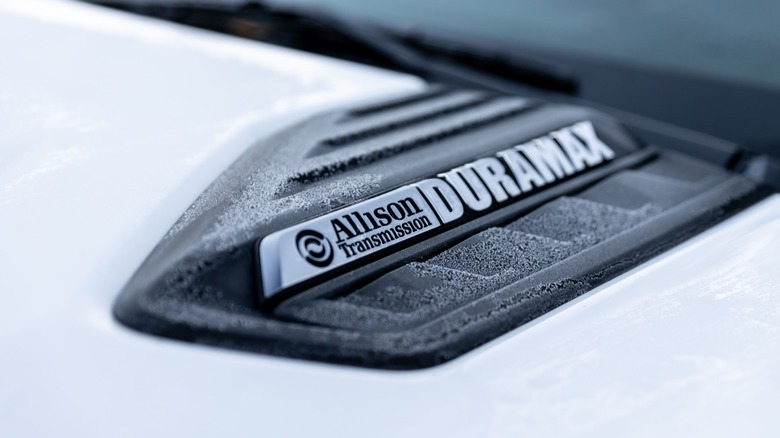
Wirestock Creators/Shutterstock
The LMM Duramax, which was introduced in 2007, was not too different from the LBZ, save for the emissions control parts that were added to comply with the new regulations. This was a major cause of discontent among Duramax enthusiasts, given that it introduced reliability issues that weren’t as prevalent in previous-generation engines that didn’t feature emissions devices and also lowered the fuel economy.
Additionally, there were also issues with the pistons and crankshafts. While this might not be an issue for people driving vehicles with a stock version of the LMM engine, performing excessive modifications made the pistons and crankshaft more likely to snap. This was also an issue with the LBZ, but the LMM’s pistons and crankshafts are, unfortunately, more prone to cracking.
Another issue with the LMM engine was that the cooling lines were susceptible to leakages. In the event of a leak, the transmission system would overheat, and the inner components were likely to suffer significant damage. The easiest way to fix this issue is by changing the cooling lines to aftermarket lines. LMM engines also deal with excessive regeneration, which is a process by which the diesel particulate filter removes any accumulated particulate matter. Excessive regeneration can cause engine troubles, but these problems can be mitigated by using a fuel additive that reduces the buildup of particulate matter.